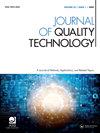《通过统计理解选举》,奥勒·j·福斯伯格著,CRC出版社,泰勒和弗朗西斯集团,佛罗里达州博卡拉顿,2020年,225页,69.95美元,ISBN 978-0367895372
IF 2.6
2区 工程技术
Q2 ENGINEERING, INDUSTRIAL
引用次数: 0
摘要
这本书很好地介绍了选举中使用的一些统计方法。它有两部分。第一部分包括四章,介绍了民意调查的估计方法。主要的技术问题是估计在投票中持有特定偏好的人口比例。问题的分析核心是二项分布,抽样和估计过程围绕着这个分布。就像在现实世界中一样,总会有复杂的事情发生。提供了各种补救措施来解决这些并发症。作者做了一个伟大的工作,介绍了关键的概念和考虑问题的制定和解决。例如,在介绍加权对得出民意调查估计数的重要性时,作者假装写了一篇关于军队中性别公平问题的民意调查结果的新闻稿。很明显,如果使用不同的人口统计来源,民意调查结果就会大不相同。这样的例子对于读者理解主题及其复杂性非常有用。书的第二部分介绍了通过检查选举结果来发现欺诈和异常现象的一些技术。一些技术建立在一个有趣的前提上,即人类不擅长模仿随机性。这与Fisher(1958)所说的相呼应,“如果一个人试图随机地思考数字,那么他想到的数字就远非随机。”详细介绍了Benford测试,包括它的历史和它在分析选举数据中有趣的应用,根据不同选区报告的领先数字的分布来检测异常。并介绍了微分失效和一些回归模型。利用数据中的地理信息可以建立空间相关性模型。本书最后对斯里兰卡自1994年以来的数据进行了详细讨论。这是一本有用的书,可以帮助广泛的读者从分析和科学的角度理解选举过程的统计力量。除了书中介绍的技巧外,书中还有轶事、评论和见解,可以丰富阅读体验。例如,在序言中,一位尼加拉瓜领导人说:“的确,你们赢得了选举,但我赢得了计票。或者第四章末尾的评论,“就像统计学中的许多事情一样,一个领域的质量提高往往会降低另一个领域的质量。”本书中的统计技术与上下文及其应用的背景紧密结合。读完这本书,我很感激这本书帮助我理解了一个复杂世界中的一个复杂问题。并不是所有的事情都像它看起来的那样,但我们可以用足够的知识和有用的工具来装备自己,帮助我们从各个角度看待数据,真正感受到数据的本来面目。本文章由计算机程序翻译,如有差异,请以英文原文为准。
Understanding elections through statistics by Ole J. Forsberg, CRC press, Taylor & Francis group, boca Raton, FL, 2020, 225 pp., $69.95, ISBN 978-0367895372
This book offers a good introduction to some statistical methods used in elections. It has two parts. The first part contains four chapters that cover estimation methods for polls. The main technical problem is the estimation of the proportion of the population holding a particular preference in voting. The analytic core of the problem is binomial distribution and the sampling and estimation procedures center around this distribution. As in the real world there are always complications. Various remedies are provided to address these complications. The author has done a great job of introducing the critical concepts and considerations in both the problem formulation and solution. For example, when introducing the importance of weighting in deriving the estimate of the poll, the author pretends to write a press release of his poll result on the issue of gender fairness in the military. It is clear that if a different source of demographics statistics is used, the poll result is quite different. Examples as such are quite useful for readers to understand the subject matter and its complexity. The second part of the book covers a few techniques to detect frauds and anomalies by examining the election results. Some techniques build on an interesting premise that humans are bad at mimicking randomness. This echoes what Fisher (1958) had said, “if one tries to think of numbers at random, one thinks of numbers very far from at random.” The Benford test is introduced in detail, including its history and its interesting applications in analyzing election data to detect anomaly based on the distributions of the leading digits reported by different precincts. The differential invalidation and some regression models are introduced as well. Spatial correlations could be modeled by using the geographical information in the data. The book concludes with a detailed discussion on data from Sri Lanka since 1994. This is a useful book that can help a broad range of readers to appreciate the power of statistics in understanding the election process from an analytic and scientific perspective. On top of the techniques introduced in the book, there are anecdotes and comments and insights that can enrich the reading experience. E.g., as in the preface the statement from a Nicaraguan leader “Indeed, you won the elections, but I won the count.” or the comment in the end of Chapter 4 “as with many things in statistics, increasing quality in one area tends to reduce quality in another.” Statistical techniques in this book are tightly bonded with the contexts and the backgrounds of their application. After reading the book, I appreciate the book has helped me understand a complex problem in a complex world. Not everything is what it appears to be, but we can equip ourselves with sufficient knowledge and useful tools to help us look at the data in every angle and really feel the data as it is.
求助全文
通过发布文献求助,成功后即可免费获取论文全文。
去求助
来源期刊

Journal of Quality Technology
管理科学-工程:工业
CiteScore
5.20
自引率
4.00%
发文量
23
审稿时长
>12 weeks
期刊介绍:
The objective of Journal of Quality Technology is to contribute to the technical advancement of the field of quality technology by publishing papers that emphasize the practical applicability of new techniques, instructive examples of the operation of existing techniques and results of historical researches. Expository, review, and tutorial papers are also acceptable if they are written in a style suitable for practicing engineers.
Sample our Mathematics & Statistics journals, sign in here to start your FREE access for 14 days
 求助内容:
求助内容: 应助结果提醒方式:
应助结果提醒方式:


